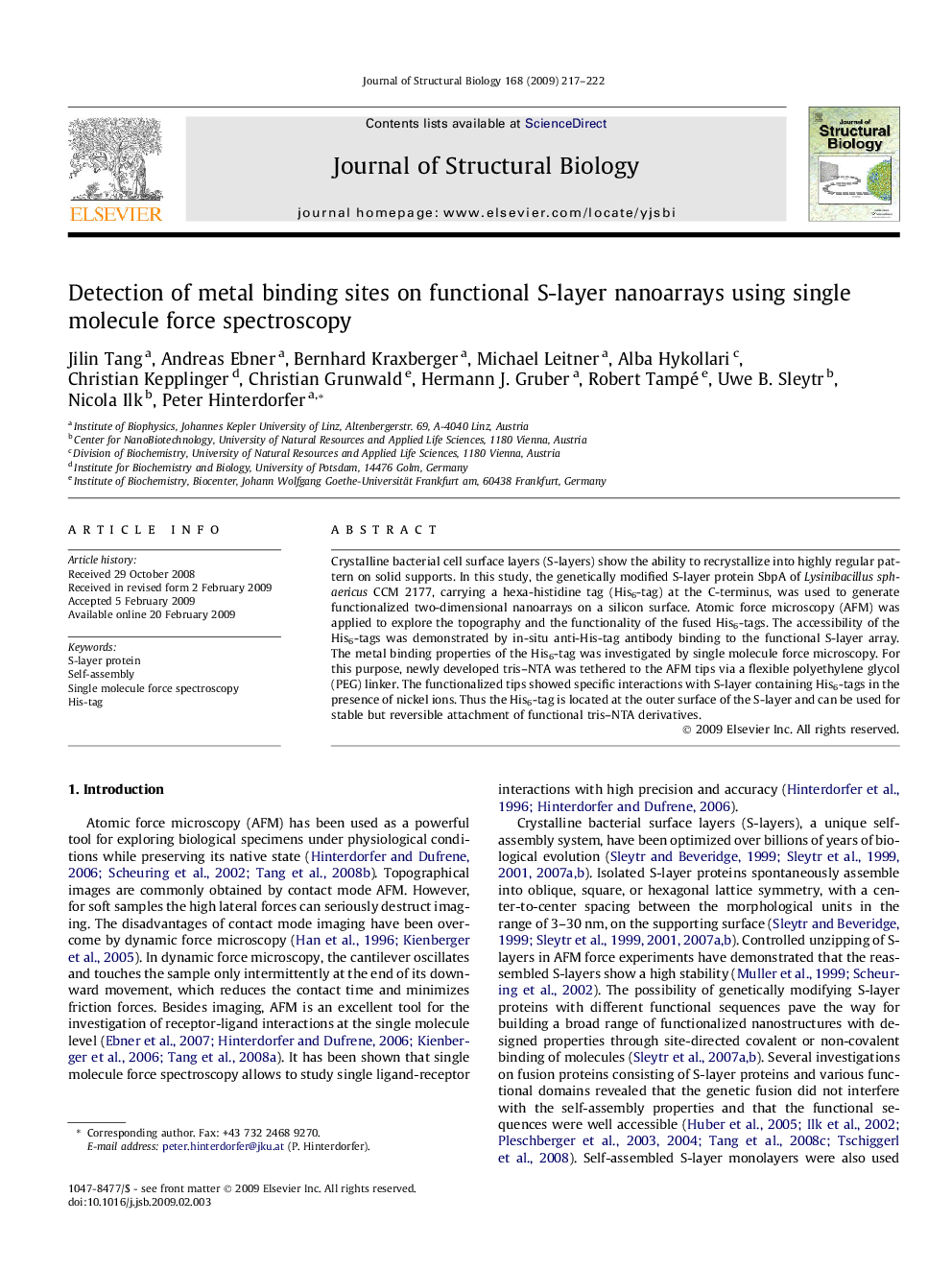| کد مقاله | کد نشریه | سال انتشار | مقاله انگلیسی | نسخه تمام متن |
|---|---|---|---|---|
| 2828998 | 1162775 | 2009 | 6 صفحه PDF | دانلود رایگان |

Crystalline bacterial cell surface layers (S-layers) show the ability to recrystallize into highly regular pattern on solid supports. In this study, the genetically modified S-layer protein SbpA of Lysinibacillus sphaericus CCM 2177, carrying a hexa-histidine tag (His6-tag) at the C-terminus, was used to generate functionalized two-dimensional nanoarrays on a silicon surface. Atomic force microscopy (AFM) was applied to explore the topography and the functionality of the fused His6-tags. The accessibility of the His6-tags was demonstrated by in-situ anti-His-tag antibody binding to the functional S-layer array. The metal binding properties of the His6-tag was investigated by single molecule force microscopy. For this purpose, newly developed tris–NTA was tethered to the AFM tips via a flexible polyethylene glycol (PEG) linker. The functionalized tips showed specific interactions with S-layer containing His6-tags in the presence of nickel ions. Thus the His6-tag is located at the outer surface of the S-layer and can be used for stable but reversible attachment of functional tris–NTA derivatives.
Journal: Journal of Structural Biology - Volume 168, Issue 1, October 2009, Pages 217–222